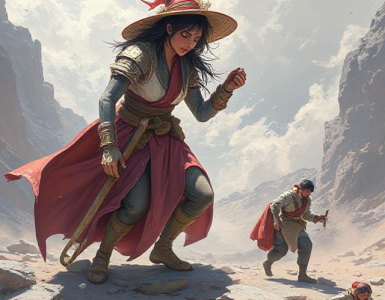We all love a good movie, a catchy tune, or a stunning painting. But how often do we really look beyond the surface? Pop culture, in all its glorious forms, is brimming with fascinating details, hidden meanings, and surprising connections that often go unnoticed. Let’s dive into some unexpected gems, from cinematic techniques to musical motifs and artistic innovations.
The Magic of Mise-en-scène: More Than Just a Pretty Picture
Think about your favorite movie scene. You probably remember the action, the dialogue, the amazing performance. But what about the *mise-en-scène*? This French term, often overlooked, refers to everything visible within the frame – the set design, costumes, lighting, and even the placement of objects. It’s the silent storyteller, subtly conveying mood, character, and theme. What Are the Different Genres of Music?
Consider the stark, minimalist sets of many Wes Anderson films. The perfectly symmetrical compositions and vibrant color palettes aren’t just aesthetically pleasing; they reflect the characters’ rigid personalities and the often dysfunctional dynamics of their relationships. Or take a look at the shadowy, claustrophobic lighting in films noir. The darkness isn’t just a stylistic choice; it mirrors the moral ambiguity and psychological turmoil of the characters entangled in crime and deception. The next time you watch a film, pay close attention – the mise-en-scène is a treasure trove of hidden information.
Musical Easter Eggs: Hidden Melodies and Referential Genius
Music is filled with fascinating secrets, too. Composers often incorporate musical quotes, known as “musical allusions,” referencing other works or even creating playful dialogues between different musical ideas. This can add depth and meaning to a piece, creating a kind of inside joke for the musically literate listener.
Think about the Beatles’ “Strawberry Fields Forever.” The track’s psychedelic soundscape is partly due to its innovative recording techniques, but there’s also a subtle nod to classical music within its complex structure. Similarly, many film scores incorporate leitmotifs – recurring musical themes associated with specific characters, emotions, or events. Hans Zimmer’s work is a masterclass in this, with his iconic scores for films like *Inception* and *The Lion King* using leitmotifs to build emotional resonance and narrative depth.
Beyond obvious influences, many artists weave intricate webs of musical references seemingly out of thin air, creating a dialogue across time and genre. The way Radiohead incorporates elements of krautrock with electronic experimentation points to influences that aren’t always apparent on a first listen. The use of sample-based music in hip hop is a rich tapestry drawing from across genres – a constant recontextualization and reimagining of sound.
The Unsung Heroes of Visual Art: Technique and the Unexpected
Visual artists, too, have their secret weapons. The techniques employed by artists, from the brushstrokes of a Renaissance master to the layering techniques of a contemporary digital artist, significantly influence the final work’s impact. The impasto technique, characterized by thick layers of paint, creates a texture that engages the viewer’s senses in a way a smooth, flat surface cannot. Similarly, the use of sfumato (a technique of blurring lines to create a hazy effect), famously used by Leonardo da Vinci in the *Mona Lisa*, adds an ethereal quality to the painting.
The fascinating history of art materials adds yet another layer to this. Think about the use of gold leaf in medieval illuminated manuscripts—a testament to luxury and spirituality. The very material used could communicate cultural and religious values without a single word. Consider even more subtle elements: the grain of the canvas, the age and type of paper affect the final look of the piece just as much as the artist’s intent.
Furthermore, the artistic context itself often gets overlooked. A painting’s meaning can shift dramatically based on the social and political climate of its creation. A seemingly simple portrait could carry hidden messages or criticisms about the era it comes from. Consider the coded meanings within Surrealist art – a fascinating blend of dreams, subconscious imagery, and political satire with a depth that rewards exploration.
Beyond the Obvious: Decoding Hidden Meanings
Often, the most interesting aspects of art and entertainment are the things that aren’t explicitly stated. Subtext, symbolism, and allegory play a crucial role in adding depth and layers of meaning. For example, the seemingly simple children’s tale of *Alice in Wonderland* is packed with social and political commentary that becomes apparent upon closer examination. The film adaptation of *The Wizard of Oz* contains underlying interpretations – from the depression-era allegory to the symbolic representation of a young girl’s coming-of-age.
By actively engaging with the deeper contexts of art, we discover a far richer experience. We uncover the thought processes, historical influences, and cultural contexts that shape these creative expressions. The next time you watch a movie, listen to an album, or visit an art gallery, remember to look beyond the surface. There’s a whole universe of hidden layers waiting to be discovered.
So, the next time you encounter a piece of art or entertainment, take a moment to appreciate the intricate details, the subtle nuances, and the hidden connections. You might be surprised by what you uncover. Happy exploring!

























Add comment